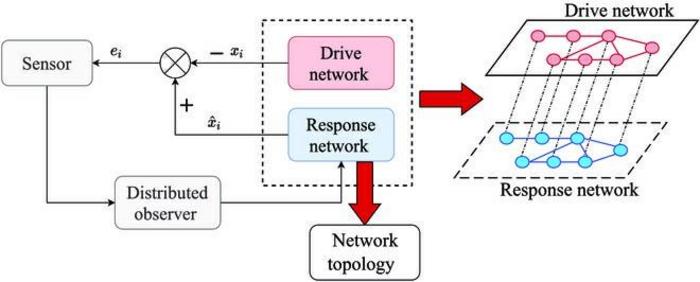Researchers from Huazhong University of Science and Technology, in collaboration with the Donders Institute for Brain, Cognition and Behavior at Radboud University, have developed a revolutionary method for the rapid identification of network topologies. Their new approach, detailed in a recent publication in Cyborg Bionic Systems, significantly accelerates the process of understanding complex dynamical networks, which are crucial in numerous applications ranging from power grids to transportation systems.

Credit: Yu Chen, The School of Artificial Intelligence and Automation, Huazhong University of Science and Technology.
Researchers from Huazhong University of Science and Technology, in collaboration with the Donders Institute for Brain, Cognition and Behavior at Radboud University, have developed a revolutionary method for the rapid identification of network topologies. Their new approach, detailed in a recent publication in Cyborg Bionic Systems, significantly accelerates the process of understanding complex dynamical networks, which are crucial in numerous applications ranging from power grids to transportation systems.
The innovative method, named Finite-Time Topology Identification of Delayed Complex Dynamical Networks (FT-TIDCN), leverages finite-time stability theory to achieve swift and accurate topology identification in networks that exhibit time delays and nonlinear interactions. This advancement addresses a common challenge in network science: the slow convergence times of traditional identification methods, which can hinder timely responses to network changes and anomalies.
Key Features and Innovations:
Rapid Identification: The FT-TIDCN method achieves topology identification in finite time, bypassing the slower asymptotic approaches commonly used in network analysis.
Handling Nonlinearities and Delays:
It effectively deals with the complexities introduced by nonlinear coupling and time delays in dynamic networks, providing more accurate results than previous models.
Application to Power Grids:
A notable application of this method is in power grid management, where it can quickly detect line outages, enhancing reliability and response times during power failures.
Practical Applications:
The researchers demonstrated the effectiveness of the FT-TIDCN method through two numerical experiments. These experiments showcased the method’s superior performance in identifying network structures swiftly and accurately compared to traditional methods. Particularly in power grids, the method can detect line outages almost instantaneously, a critical advantage for maintaining system stability and preventing cascading failures.
“The ability to quickly respond to changes and failures in complex networks such as power grids and communication systems is more crucial than ever,” said Dr. Zhi-Wei Liu, one of the lead researchers on the project. “Our method not only speeds up the process but also enhances the accuracy of topology identification, which is vital for the effective management and operation of these networks.”
Looking ahead, the research team plans to extend the application of the FT-TIDCN method to other types of dynamic networks and explore its integration with real-time monitoring systems. This could lead to significant improvements in various sectors, including traffic management, internet infrastructure, and beyond, where network dynamics play a crucial role.
This press release highlights the groundbreaking research conducted by the team at Huazhong University of Science and Technology, emphasizing the significant advancements made in the field of network topology identification. The new method promises to enhance the responsiveness and efficiency of systems critical to modern infrastructure.
The paper, “Finite-Time Topology Identification of Delayed Complex Dynamical Networks and Its Application” was published in the journal Cyborg and Bionic Systems on Mar 20, 2024, at DOI:
Journal
Cyborg and Bionic Systems
Article Title
Finite-Time Topology Identification of Delayed Complex Dynamical Networks and Its Application
Article Publication Date
20-Mar-2024



